The first sign of pregnancy, the early gestational sac, may be seen as early as 16-21 days post conception on US, where one sees a well organized sac within the endometrium. By the 6th menstrual week, the early embryo can be identified. At this time the crown rump length is the best estimation of GA. After 13-14 weeks, measurements used for dating are bipareital diameter (BPD), head circumference (HC), abdominal circumference (AC) and femur length (FL).
First Trimester:
|
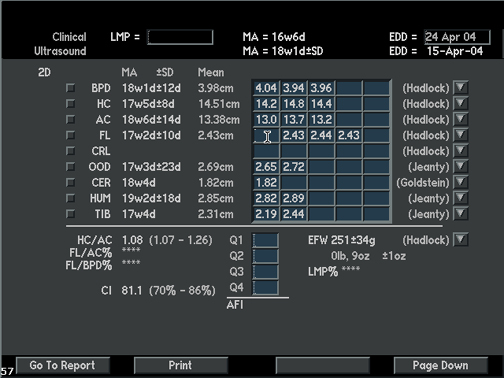 |
In the first trimester the crown-rump length is accurate to within 3 to 5 days for gestational age (GA) determination. |
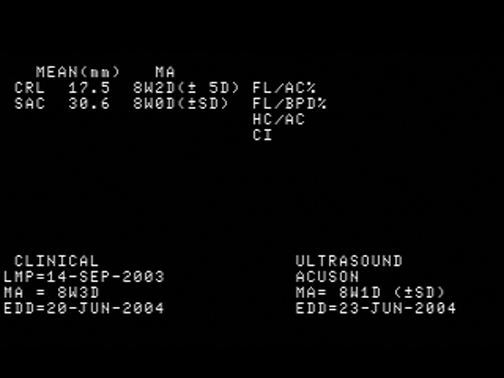 |
|
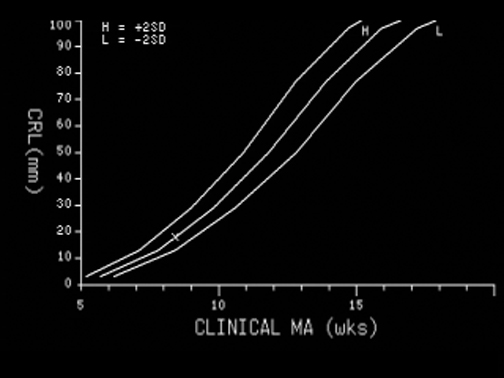 |
The measurement is plotted on a nomogram that gives a correlation for the measurement to a GA in weeks. |
Second Trimester: |
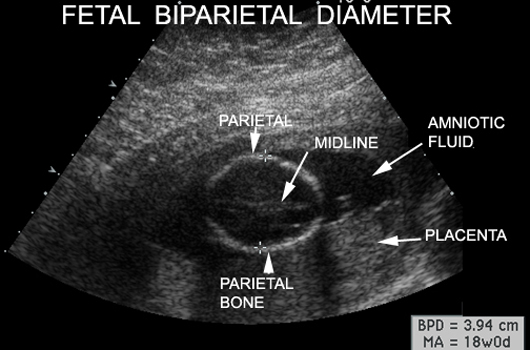 |
The biparietal diameter and femur length are most accurate; a combination of measurements is used to estimate fetal weight. Between 14 and 26 weeks, a combination of measurements is used to approximate GA. The biparietal diameter is the easiest and most reproducible measurement to obtain accurately with a variation of +/- 7 to 10 days. |
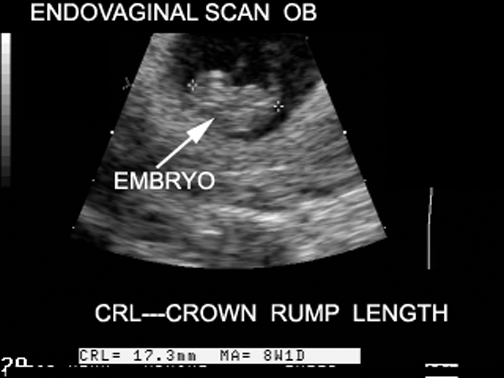 |
|
| Femur and humerus lengths correlate strongly with both the bi parietal diameter and GA, with a variation in femur length of 7 to 11 days. The abdominal circumference has a wider variation, +/- 2.8 weeks, and may not be useful. |
Third Trimester:
- After 26 weeks, all measurement are less accurate. In the third trimester, the variation in both biparietal diameter and femur measurements is +/- 14 to 24 days. If a GA estimate must be done in the third trimester, serial examinations are helpful.
- A combination of measurements is used to determine GA as the combination renders a superior result to a single measurement. All measurements are compared to percentile values; for example, a 40 mm biparietal diameter could represent a 16 week fetus (90th percentile) or a 19 week fetus (10th percentile).
|




